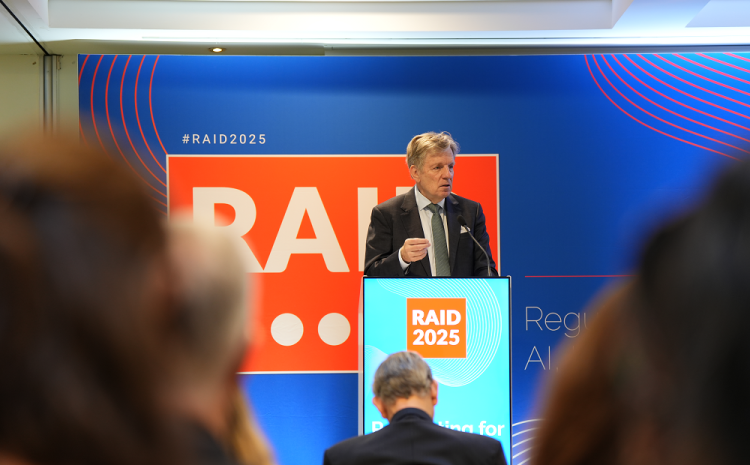Europe at a Crossroads: Esko Aho on AI, Regulation, and the Power of Concepts

Esko Aho delivering opening keynote address at RAID 2025
At RAID 2025 in Brussels, Esko Aho, Former Prime Minister of Finland, delivered a keynote that challenged Europe to rethink its approach to artificial intelligence and technological development. Speaking from a conceptual and historical perspective, he positioned AI as the latest in a long line of General Purpose Technologies (GPTs) – breakthroughs such as the steam engine, railways, electricity, and computing, which have each transformed economies and societies.
From Railways to AI: The GPT Effect
Aho reminded delegates that GPTs are not just industries in themselves; their true power lies in transforming other sectors. Just as railways reshaped agriculture, food, steel, and oil, AI has the potential to drive productivity across healthcare, logistics, manufacturing, and beyond. But he emphasised a crucial difference: while first-generation GPTs extended physical power, AI represents a second-generation GPT, moving beyond human brainpower itself.
Europe’s Conceptual Mistakes
Why, then, is Europe lagging behind the US and China in AI? Aho traced the problem to conceptual errors made over the past three decades. In the 1980s and early 1990s, Europe led in mobile technologies thanks to the GSM standard, a robust regulatory environment, and strong investment in education. But the shift from a bottom-up integration strategy (the single market) to a top-down focus (the common currency) left critical areas such as the digital single market underdeveloped. The result, he argued, is that Europe surrendered its leadership position in telecoms and is now struggling to catch up in AI.
The OODA Loop: A Path Forward
Drawing inspiration from military strategy, Aho invoked the OODA loop – Observe, Orient, Decide, Act – as a framework for Europe’s future:
- Observe: Europe must acknowledge that it cannot win the vertical race against the US and China in core AI models, where massive investment has already set the pace. But the real competition lies in the horizontal application of AI across sectors, where Europe still holds advantages.
- Orient: Policymakers and businesses must focus on sector-by-sector strategies to integrate AI—healthcare, logistics, industrial production, agriculture—driving productivity gains across the economy.
- Decide: Effective decisions will require collaboration between public institutions and private companies, just as the GSM standard was born through joint effort.
- Act: Europe must move faster. Reports and strategies abound, but execution remains slow. Breaking down bureaucratic silos and acting decisively will be essential to competing in the AI era.
A Positive Attitude Toward AI
Aho concluded with a call for optimism. While AI carries risks, it also offers solutions to some of Europe’s greatest challenges—aging populations, environmental sustainability, and security. Success, he argued, depends on Europe’s ability to approach AI with a positive, proactive mindset, recognising both its dangers and its potential to create prosperity.
“Concepts are the most powerful forces in politics, regulation, business, and government,” Aho told delegates. “If we understand AI as a general-purpose technology and orient our policies accordingly, Europe can still play a leading role in shaping its future.”




